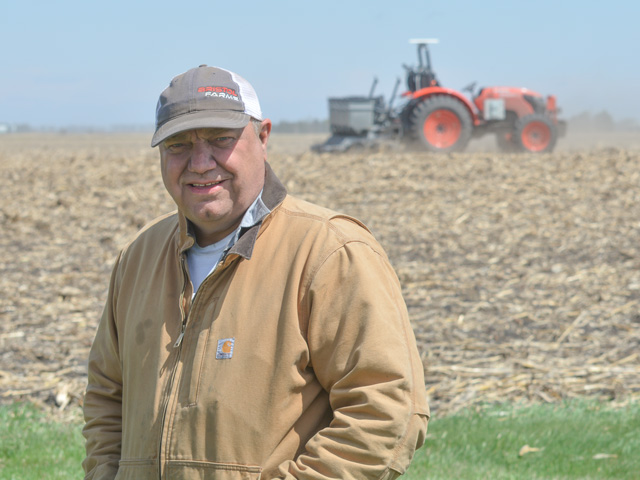Autonomous Answers
Robotic Planting Stirs Curiosity and Debate
ANKENY, Iowa (DTN) -- Farmer curiosity and debate about autonomous farming spiked recently after DTN's latest robotic planting article. The subject topped readership charts, garnered more than 120 comments on Facebook and sent Twitter atwitter. So, we went to Craig Rupp, co-owner of Sabanto, a Chicago-based robotic farming company, for answers to concerns and specific operational questions from several farmers about robotic planting.
Read the full story here: https://www.dtnpf.com/…
Several Illinois and Iowa farmers hired Sabanto to custom plant soybeans this year. It's being done with three, GPS-guided, remotely operated 60-horsepower Kubota tractors pulling five-row Harvest International planters.
Will autonomous equipment and technology being developed by Sabanto and others (Raven Applied Technology, John Deere, etc.), be the death blow for the family farm? Is it part of the evolution of farming that helps family farms survive labor shortages? How does driverless equipment work and avoid potential problems?
Here are Rupp's responses (slightly edited for space):
Q: How will autonomous tractors and planters be filled with fuel, seed and maintained?
A: Right now, at least one person needs to be on-site to tender equipment and one person off-site to monitor it. Replenishing supplies will be done autonomously in the future using robotic equipment.
Q: How many people will it take to monitor, operate and keep each planting unit or units moving per location?
P[L1] D[0x0] M[300x250] OOP[F] ADUNIT[] T[]
A: We're working to reduce that number by as much as we possibly can. Right now, there are several people on- and off-site to keep them going. Our goal is to continue to automate the process where one person brings the equipment and supplies to a site and one person monitors it.
Q: How will a driverless tractor avoid obstacles in a field such as unmapped tile inlets, guide wires, sink holes, rocks, mud, etc.?
A: We do have sensors, cameras and technology onboard to avoid obstacles. The tractor will stop and we haven't had issues yet. The remote operator can get a visual of what's going on to avoid, and possibly maneuver, the unit around the problem area. We've had to take GPS coordinates for two new tile inlets in one field and build that into the plan. Meanwhile, I see a lot of tweets where a farmer in a tractor completely buries it or hit objects.
Q: How does the equipment judge if it's too muddy to plant an area? Who makes the call to plant, depending on field conditions?
A: Our equipment is much lighter than most (about 7,000 pounds for a tractor and planter), so that will play a part in it. We just won't drop off equipment and start planting. There will be a level of scouting to see if there are issues in the field. Can it be planted? Can other areas be planted first or not at all? An employee who scouts the field will make that decision.
Q: If a planter hits a rock and something breaks or malfunctions, what will the autonomous unit do?
A: We're highly instrumented to detect that. Every field is a learning experience. There are sensors to mitigate that problem. The planters are fully monitored to detect problems.
Q: Can the autonomous unit plant an entire field on its own, including head lands and end rows and navigate waterways?
A: We're semi-autonomous with end rows and head lands now. It will be done eventually. Waterways will be factored in the path plan.
Q: How is equipment moved from field to field?
A: Someone can jump in the seat and drive from field to field. We can put the tractors and planters on a flatbed trailer to be pulled by a pickup truck. The 235-horsepower tractor and 18-row planter utilized in 2019 was hauled by a semi.
Q: Describe the purpose of the company?
A: We provide custom farming services to clients using autonomous equipment. Right now, that's planting, but it will include other services in the future.
Q: Some people are concerned autonomous farm equipment will end the family farm as we know it. Your thoughts?
A: My grandfather used horses to farm and people thought tractors would be the end of farming, which it wasn't. This is the continuation of that. Farmers make all the agronomic decisions. I'm trying to help farmers get seed planted economically and quickly. Almost every farmer I talk to, the first complaint is the lack of labor. That's what's hurting the family farm. I'm trying to fix that.
For more information: www.sabantoag.com
Matthew Wilde can be reached at matt.wilde@dtn.com
Follow him on Twitter @progressivwilde
(c) Copyright 2020 DTN, LLC. All rights reserved.






